The goal the project was to develop a propulsion unit for a light electric vehicle (LEV) based on switched reluctance machine (SRM). The idea was to create a propulsion unit fed from two series connected 12V batteries. The machine has to reach 1.2kW. Considering the efficiency also, the current that the machine must be fed at reaches 80A at full power.
The chosen SRM is a 8/6 four phase structure. The fist step was to design the machine such that it will never reach over saturation and, restricted by the imposed dimensions, it has to be able to reach the desired power. The design was quite challenging considering high currents, and small available space. After sizing, the structure was firstly validated using finite element analysis (FEA) engaging CEDRAT Flux 2D software, coupled with Matlab Simulink for the machine's control.
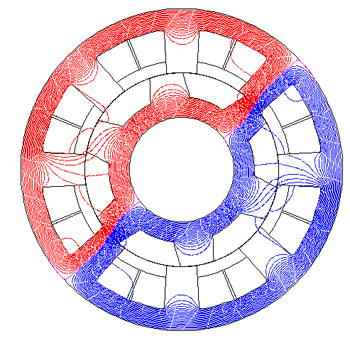

The results from the FEA simulations reached all the expectations. Choosing the proper firing angles the machine is not over saturated and is able to reach the rated current and to develop the desired torque (3.4Nm).
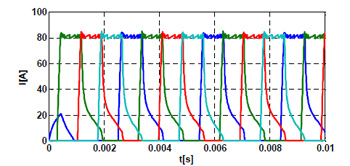

As the machine is used for propulsion unit, such a rippled torque characteristic is not suitable, hence, its linearization needed to be taken into consideration. For this, a method called Direct Instantaneous Torque Control was applied. The method is not suitable for simulations with FEA environment. The solution was to create a simulation program based on the FEA results for the flux and torque versus current and rotor position. The program was created in Matlab Simulink.
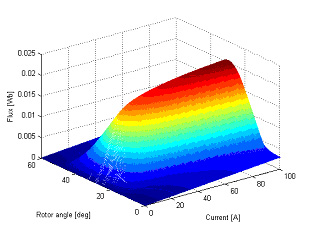
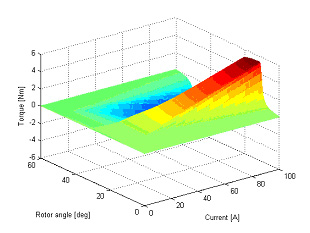
Theoretically speaking, the DITC is accomplished using two hysteresis bands, one larger than the other. In the control unit, in fact, we need three bands, two of them on the upper and lower sides, going from the imposed torque reference value to the outer limits (marked with blue in figure 8, first plot) and the main one having the extreme limits inside the above mentioned band. While single phase conduction, the torque is regulated inside the main (the thinner) band. During phase commutation the regulation of the torque is done by the incoming phase, on one hand, trying to keep it in the inner hysteresis band, and by the outgoing phase, on the other hand, which is energized when the torque falls and reaches the lower limit of the outer band. As the current in the incoming phase is increasing the torque will be again established in the inner band.
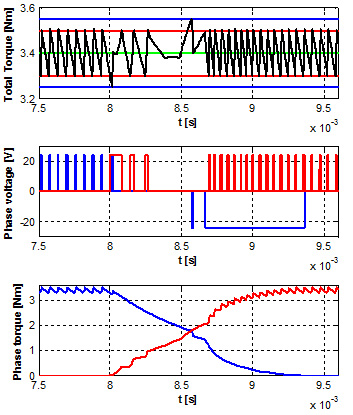
The results of the simulations using the DITC procedure for torque liniarization proved that the method is suitable for the particular application.
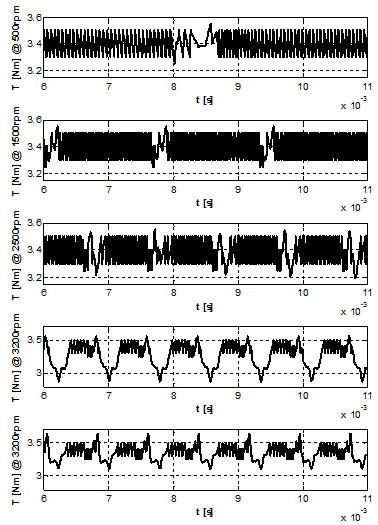
As the machine was validated simulations wise, the next step was to build the machine in order to setup the laboratory test bench. ICPE company from Bucharest handled the necessary machining to build the SRM.
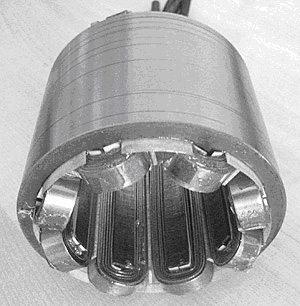
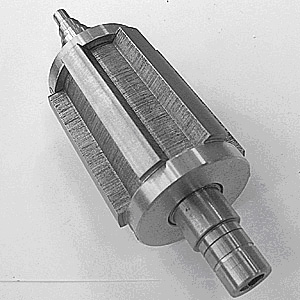
For the control of the machine, it was necessary to design and build an electronic power converter, able to handle 80A, the machine's required phase current. Using high speed MosFets in TO247 package, made the building of the converter very difficult. The tracks of the PCBs needed to be reinforced with copper bars to withstand the currents.
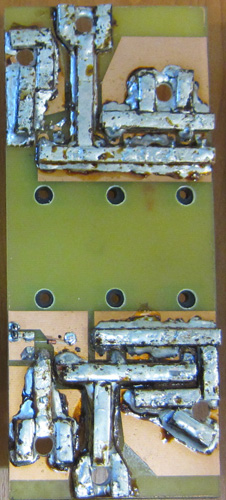

As the switched currents are high, it was important to pay attention to the design of the PCBs and also to create a robust DC link out of aluminum plates. The capacity of the DC link is very high: 30000uF.
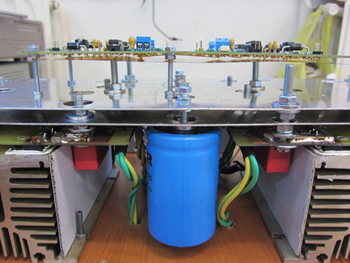

Each phase of the machine is controlled using a half H bridge. Each two half H bridges are mounted on one radiator to ensure fast cooling in case of increased temperature. Temperature sensors ensure the safe operation of the converter. In case of overheating, the converter shuts down and automatically starts the forced cooling procedure.
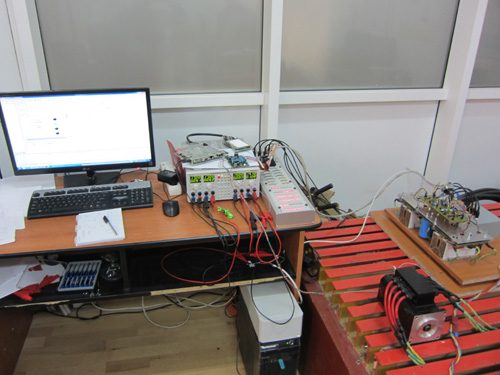
The control system is carried out using a dSPACE 1103 card. The rotor position is detected using the machine's onboard resolver. The results of the experimental tests proved that the machine is able to perform the desired speed and torque and also the custom made electronic converter is stable and there are no overheating problems.
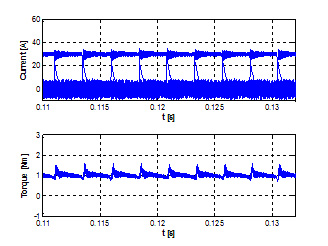
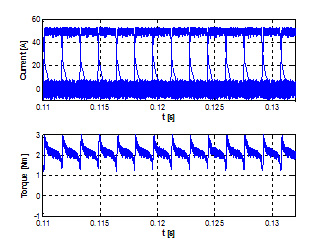
A short demonstrative movie about the operation of the system:
For more details regarding this study, feel free to contact me or to check my journal and conference publications.